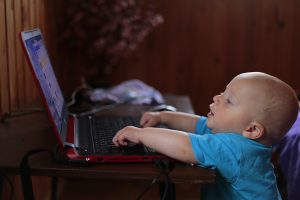Music is a universal language that transcends boundaries and offers profound benefits for everyone, including children with disabilities. When a child with disabilities learns to play a musical instrument, they embark on a journey that touches various facets of their development, from cognitive to emotional and social growth. Let’s dive deeper into how music can be a transformative tool for these children.
Cognitive Development: A Symphony of the Mind
Learning an instrument is like a workout for the brain. Studies show that musical training can lead to structural brain changes, enhancing areas responsible for auditory processing, memory, and attention. Children with disabilities often face challenges in these areas, but music can be a catalyst for improvement.
Memory Boost and Attention Enhancement
Imagine a child struggling with attention-deficit disorders. Music can help train their brain to focus for longer periods. For instance, a child learning to play the piano must concentrate on reading music, coordinating hands, and listening to the sound they produce—all at once. This multi-tasking can sharpen their attention span over time. Parents have reported noticing significant improvements in their children’s ability to concentrate on tasks outside music, such as reading or completing homework. In a music therapy session, a child with ADHD might engage in rhythm exercises that require sustained focus, gradually improving their attention span in other activities.
Problem-Solving and Creativity
Music also encourages problem-solving and creativity. When a child learns a new piece, they must figure out the best way to transition between notes or how to express emotions through dynamics. This process enhances their problem-solving skills. For example, if a child with autism is learning a new song, they might initially struggle with timing. With guidance, they learn to break down the piece into smaller sections, practicing each until they master it. This approach not only builds resilience but also fosters creative thinking. Music educators often use improvisation exercises to further boost creativity, allowing children to explore and create their own melodies.
Emotional Well-being: The Healing Power of Music
Music can be a refuge for children dealing with emotional challenges. It’s a therapeutic outlet that allows them to express feelings that might be difficult to articulate otherwise.
Stress Reduction and Anxiety Management
Playing an instrument can be incredibly soothing. The rhythmic nature of music can induce a meditative state, reducing cortisol levels—the stress hormone. Picture a child with sensory processing disorder who becomes overwhelmed in noisy environments. Practicing the guitar or the violin in a quiet space can help them unwind and manage their anxiety. Research has shown that structured music lessons, particularly those focusing on rhythm and breathing, can significantly lower stress levels in children with anxiety disorders.
Boosting Self-expression and Confidence
Music gives children a voice. Through music, children with speech impairments can express emotions without words. Take, for instance, a child who struggles with verbal communication. By playing a piece on the flute that transitions from a minor to a major key, they can convey a journey from sadness to happiness. Music teachers often encourage children to select pieces that resonate with their current emotional state, allowing for personal expression and cathartic release.
Physical Development: Fine-tuning Motor Skills
Learning an instrument is not just a mental exercise; it is a physical one too.
Enhancing Dexterity and Coordination
Instruments like the drums or the piano require coordinated movements, which can significantly improve motor skills. For a child with cerebral palsy, these instruments can act as a form of physical therapy. Regular practice can lead to improved hand strength and coordination. Parents of children with motor impairments often observe better control in day-to-day activities, like holding a pencil or buttoning a shirt. A study highlighted that children who regularly practiced percussion instruments showed marked improvement in hand-eye coordination, which translated into better performance in daily tasks.
Developing Spatial Awareness
Playing music can also enhance spatial awareness. When children learn where to place their fingers on a violin or guitar, they develop a better understanding of the space around them, which can transfer to improved spatial skills in other areas, such as sports or dance. Music educators often incorporate movement-based activities, such as dancing to rhythms, to further enhance spatial awareness and body coordination.
Social Development: Building Bridges Through Music
Music is a communal experience that can help children with disabilities connect with others.
Encouraging Teamwork and Cooperation
Joining a band or an orchestra teaches children the importance of teamwork. Each member plays a role, and together, they create harmony. For children with social anxiety, participating in a musical group can be a gentle way to interact with peers. Through collaborative efforts to perfect a performance, they learn to communicate and cooperate. Group music-making activities, such as drum circles, are particularly effective in teaching cooperation and reinforcing the idea that each participant’s contribution is valuable.
Fostering Friendships
Music provides a common ground where children can bond over shared interests. In music therapy sessions, children often work together to create rhythms or songs, forming friendships that extend beyond the music room. Parents have noted that their children become more socially active, attending events and gatherings with newfound friends. These sessions often include interactive games that encourage children to listen to each other and respond musically, fostering a sense of community and mutual support.
Confidence and Self-esteem: The Gift of Achievement
The journey of learning an instrument is filled with milestones that foster confidence.
Celebrating Progress
Each achievement, whether it’s mastering a new piece or performing in front of an audience, is a confidence booster. When children see their hard work pay off, it instills a sense of pride and self-worth. Teachers often encourage small performances in class to help children celebrate their progress and build confidence. Parents can reinforce this by creating a supportive home environment where musical accomplishments are acknowledged and celebrated.
Empowerment Through Mastery
Learning an instrument gives children a skill that they can call their own. This sense of mastery is empowering, especially for children who often face challenges in other areas of life. Knowing they can play an instrument well provides them with a sense of identity and purpose. This empowerment is crucial, as it encourages children to tackle other challenges with the same determination and resilience they apply to their musical pursuits.
Practical Tips for Parents and Educators
Integrating music into the lives of children with disabilities requires thoughtful planning and support. Here are some practical tips:
- Choose the Right Instrument: Consider the child’s physical abilities and interests. Percussion instruments might be suitable for those with limited fine motor skills, while wind instruments can be beneficial for children with respiratory concerns. Before purchasing an instrument, consider renting or borrowing different types to find the best fit.
- Create a Supportive Environment: Encourage practice in a distraction-free area. Consistent practice routines can help build discipline and focus. Incorporating visual schedules or timers can assist children in staying on task and understanding the practice duration.
- Engage with Professionals: Work with music therapists or special education teachers who understand the unique needs of children with disabilities. They can tailor lessons to suit individual learning styles. Regular communication between parents and instructors can ensure that the music program aligns with the child’s developmental goals.
- Encourage Group Activities: Enroll the child in group music classes or ensembles to promote social interaction and teamwork. Look for inclusive programs that understand and accommodate the needs of children with disabilities.
- Celebrate Achievements: Organize small recitals or family performances to celebrate progress and boost confidence. Recording performances and creating a portfolio of musical accomplishments can also be motivational.
- Be Patient and Supportive: Progress might be slow, but with patience and encouragement, children can achieve remarkable results. Acknowledge effort as much as achievement, and provide regular positive feedback.
- Incorporate Technology: Utilize apps and digital tools designed for music education. Many programs offer interactive lessons that can be particularly engaging for children with attention or learning challenges.
- Adapt and Modify: Be ready to adapt musical activities to fit the child’s current abilities. This might mean simplifying music or using adaptive instruments that accommodate physical limitations.
The Role of Music Therapy
Music therapy is a specialized field that uses music to address various therapeutic goals. Certified music therapists work with children with disabilities to improve their physical, cognitive, and emotional well-being. These professionals are trained to design individualized programs that can range from playing instruments to songwriting and listening activities.
Case Study: Music Therapy in Action
Consider the story of Emily, a 10-year-old girl with Down syndrome. Emily struggled with social interaction and verbal communication. Her music therapist used a combination of singing and instrumental play to engage her. Over time, Emily began to verbalize more during sessions, and her confidence in social settings improved. The structured yet flexible nature of music therapy allowed her to progress at her own pace, fostering both personal and social development.
Expanding Horizons: Long-term Benefits
The benefits of learning an instrument extend beyond childhood. As these children grow, the skills and confidence gained from musical training can lead to lifelong enrichment.
Academic and Career Opportunities
Children who engage in music education often perform better academically. The discipline and focus required for music practice can translate into improved study habits and academic performance. Furthermore, the skills gained through music can open doors to career opportunities in fields such as education, therapy, and the arts.
Lifelong Passion and Enjoyment
For many, music becomes a lifelong passion, providing joy and relaxation throughout adulthood. This enduring relationship with music can offer solace during challenging times and serve as a creative outlet.
The Bigger Picture: Music and Society
The integration of children with disabilities into musical activities also has broader societal benefits. It promotes inclusivity and awareness, encouraging communities to appreciate diversity and foster acceptance. By supporting music programs for children with disabilities, societies can nurture empathy and understanding.
Community Engagement
Inclusive music programs often involve performances and events that bring communities together. These events highlight the abilities of children with disabilities, challenging stereotypes and promoting a culture of inclusion.
Advocacy and Awareness
Parents and educators can advocate for music education as a critical component of special education. By sharing success stories and outcomes, they can influence policy and funding decisions, ensuring that music remains an accessible resource for all children.
The journey of learning a musical instrument is filled with opportunities for growth, connection, and joy. By embracing music, parents and educators can provide children with disabilities a joyous and transformative journey of growth and self-discovery.



